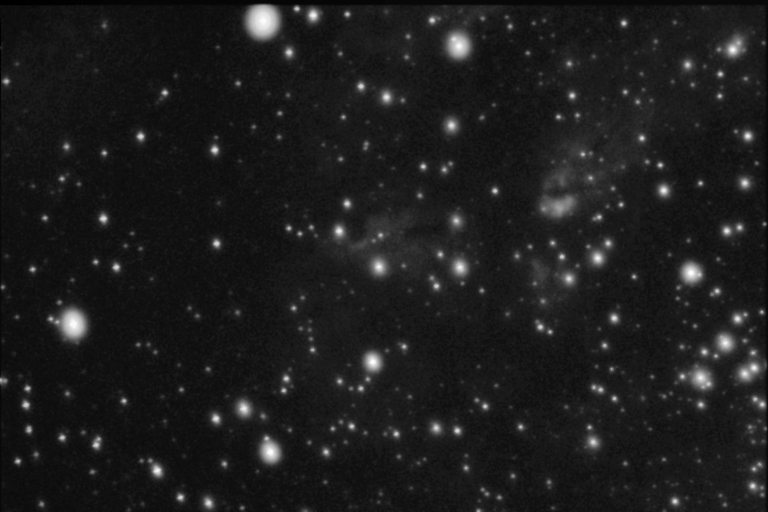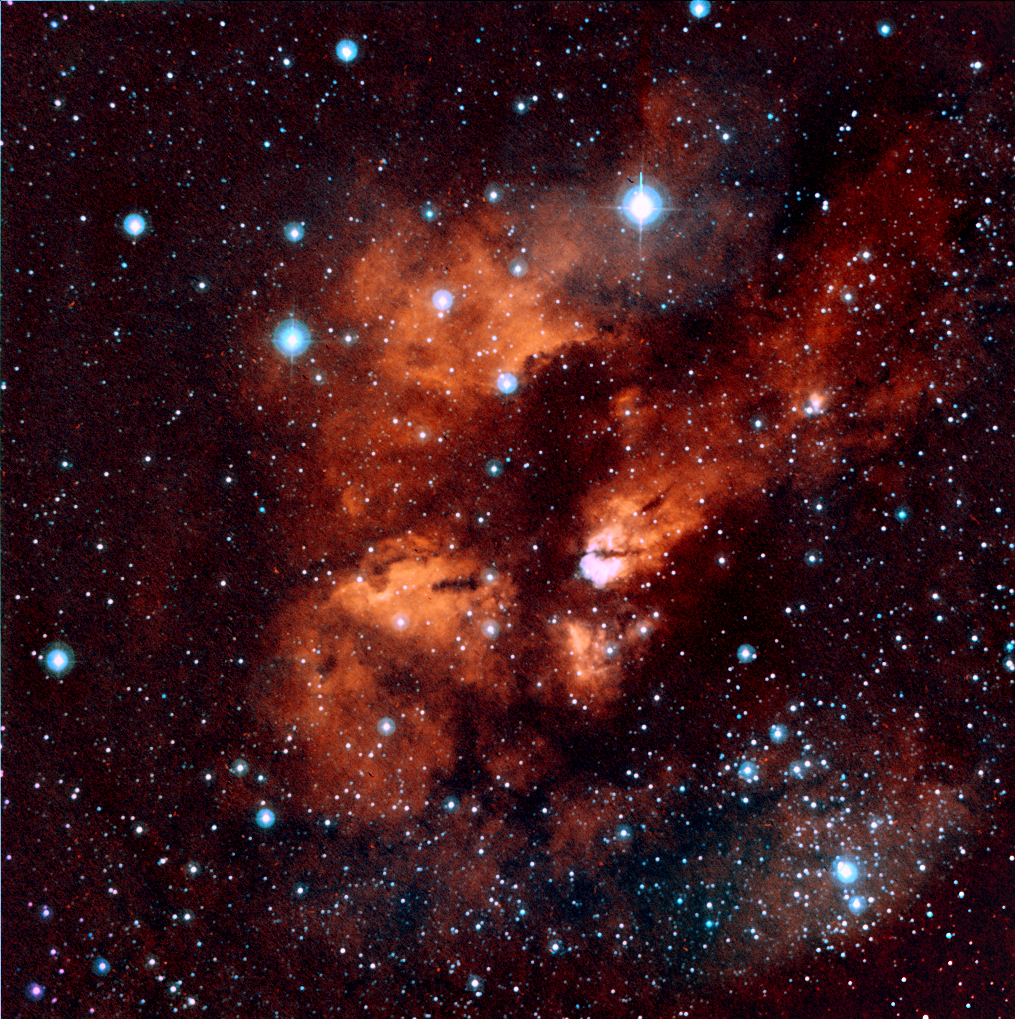
3 minutes exposure, Meade 416XT CCD.
5" f/5 refractor at prime focus.

Gum 23 is a fairly large nebula with a low surface brightness that makes it a difficult object for an 8". However it can be seen if the skies are dark. As can be seen in the images there is a mixture of light and dark nebulosity.
Colin gum was an Australian astronomer in the 1950's who made extensive photographic studies of the southern Milky Way. As a result of his research he published a catalogue of southern emission nebulae he discovered. The most famous object in his catalogue is Gum 12, the Vela supernova remnent, usually just refered to as "The Gum Nebula".
In the above images, the stars seem bloated due to the usual problem of unfiltered CCD imaging with a short-focus achromatic refractor. Chromatic aberation causes the infra-red light to focus significantly differently from blue and green light, causing the stars to bloat.
Most of the nebulae in Gum's catalogue are small and faint, although a surprising number of them are visible in an 8" telescope under dark skies. One such object is shown here, Gum 23. Another, Gum 25, is shown here. Both objects are located in Vela not far from the Vela supernova remnent, and close to each other. Gum 23 is about 1.5 degrees north of Gum 25.
